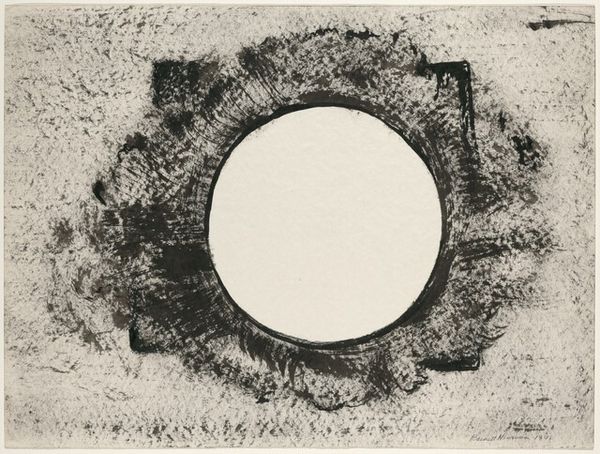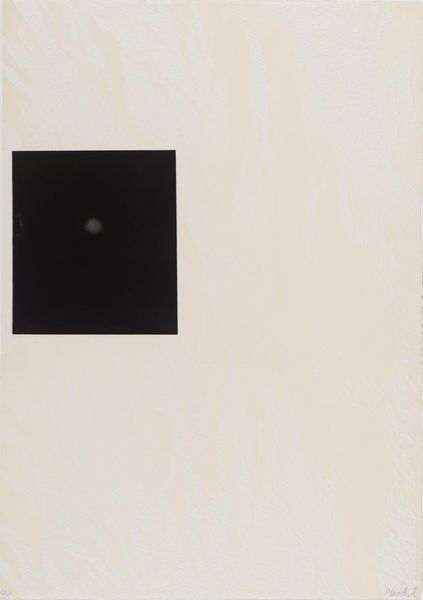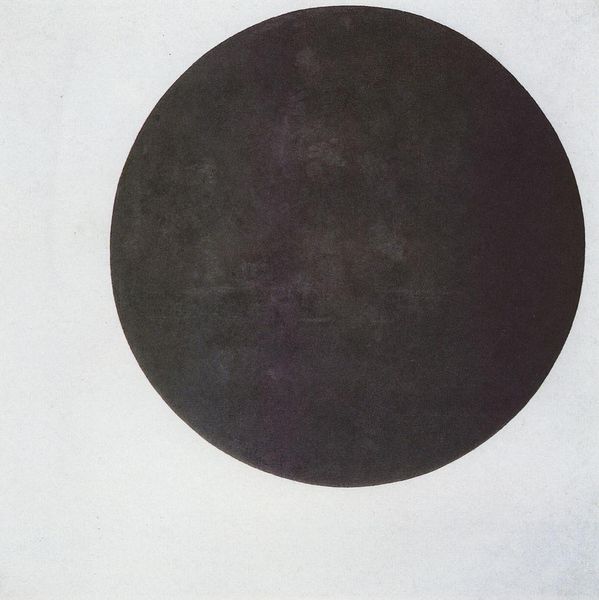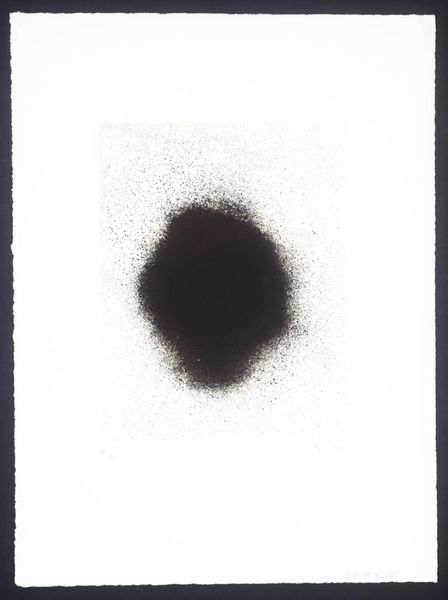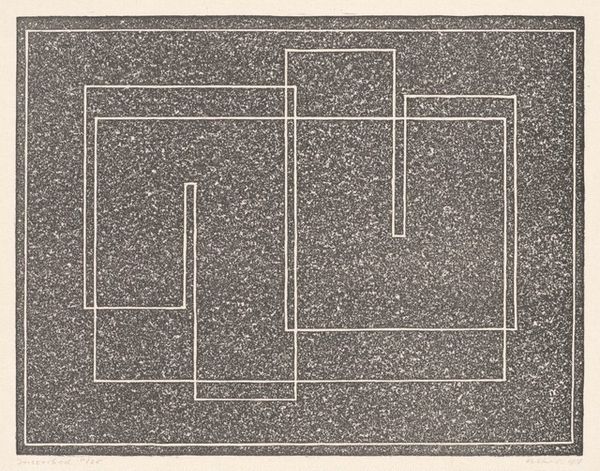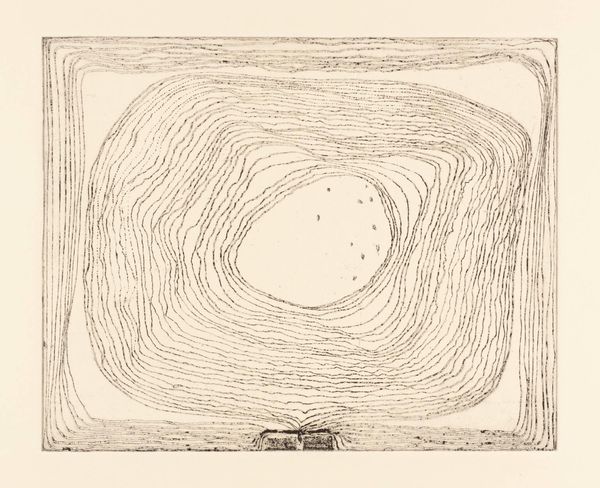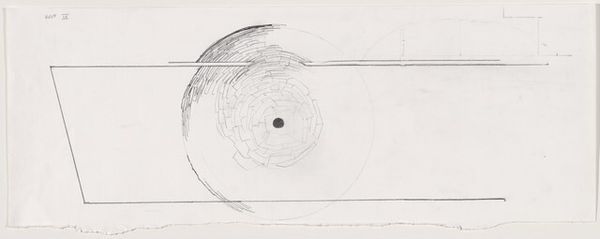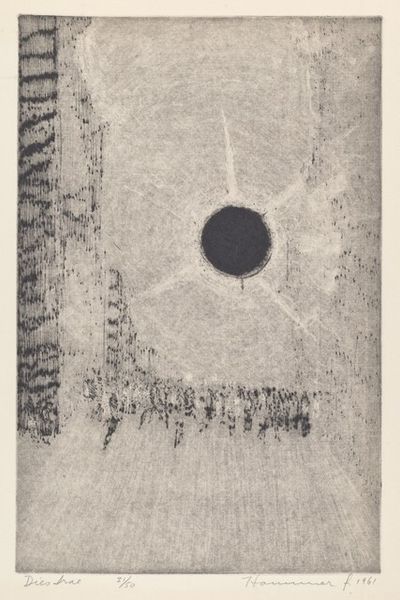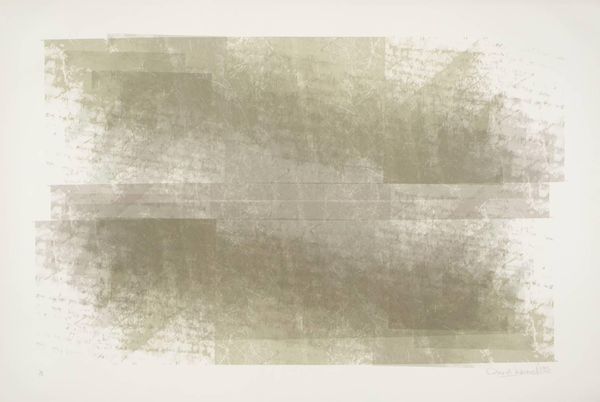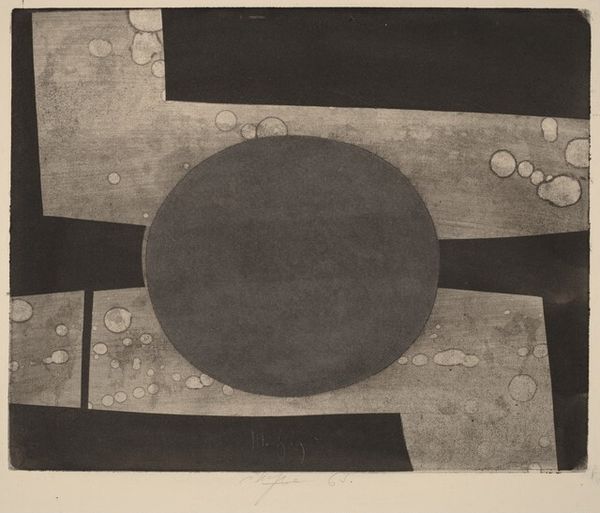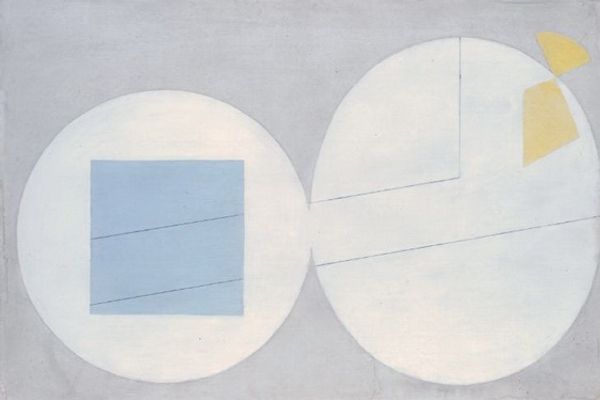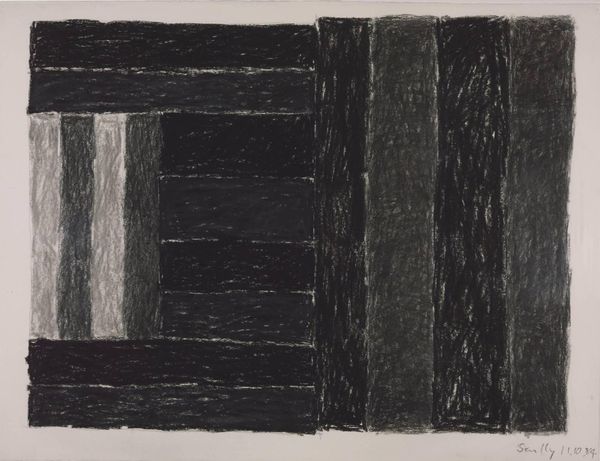
print, linocut
# print
#
linocut
#
linocut print
#
geometric
#
abstraction
#
bauhaus
#
monochrome
Dimensions: sheet: 35.56 × 50.17 cm (14 × 19 3/4 in.)
Copyright: National Gallery of Art: CC0 1.0
Curator: Josef Albers' "Schwarzer Kreis," or "Black Circle," a linocut print dating from 1933, part of his early Bauhaus work. It immediately draws me in. Editor: Its stark simplicity is almost overwhelming. The dense black circle centered in this fragmented frame gives the impression of containment, yet that single white dot within the circle… is it a source of light, or a feeling of void? It definitely reads as somber. Curator: Indeed. Understanding the historical context – this piece was made as the Bauhaus was being forced to close under Nazi pressure – informs the reading. The darkness perhaps becomes a visual metaphor for impending censorship, the suppression of progressive ideas, and looming totalitarianism. That broken frame further alludes to fractures within society. Editor: Interesting point about that period, how visual motifs emerge! Thinking iconographically, circles throughout history carry themes of wholeness, but the fragmented lines contrast sharply with any notions of completeness or stability. Given that it's a print, do you find any correlation between Albers' art and mass communication? Curator: Absolutely. Remember, the Bauhaus championed accessible art. The very nature of the linocut suggests reproduction, wider dissemination. One could argue Albers implicitly acknowledged art’s role in either resisting or enabling political ideologies – its capability to disseminate specific agendas, regardless of neutrality. The work questions the relationship between art, politics, and control in an increasingly fraught atmosphere. Editor: I keep fixating on the dot! How a tiny shift in scale drastically alters meaning. It's a miniature of that surrounding frame - creating a sense of scale where there seemingly should not be. It could almost imply that from confinement grows resilience. Curator: A vital point that art possesses polysemy: artworks can simultaneously encapsulate anxiety while seeding possibility for resistance. It is very easy for the human brain to be soothed into harmony via such precise design. Thank you for the discussion, its been great! Editor: Indeed. The symbolic potency here, in such an apparently minimal form, really speaks to Albers' genius! I'll carry this feeling of contrast around for a bit today and consider new perspectives.
Comments
No comments
Be the first to comment and join the conversation on the ultimate creative platform.
